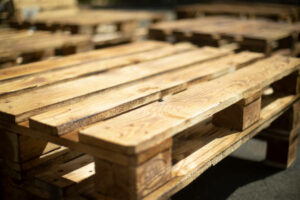Wood can be a beautiful material for furniture, flooring, and other home decor items. However, if it isn’t taken care of properly, it can quickly become damaged and look unsightly. If you have some old wood that you want to use but don’t know how to reclaim it, don’t worry! We’re here to help.
In this blog post, we will discuss 7 useful tips on reclaiming wood and making it look new again!
What is Reclaiming of Wood?
When wood is exposed to water or moisture, it can begin to rot. Over time this rotting process causes the material’s appearance and structural integrity to falter which in turn makes it unusable for most purposes like building furniture with reclaimed wood or using it as flooring.
Reclaiming wood is the act of removing all traces of damage from wooden planks so that they can be used again. The best way to do this is by sanding down the surface with a power sander, followed up by staining or painting your reclaimed wood for an updated look.
If you want something more natural than painting then try using oils and waxes like turpentine or boiled linseed oil.
Where to Reclaim Wood?
It is always best to reclaim wood from a trusted source. The first place that comes to mind when I think about reclaimed lumber is old barns. These buildings are usually made of heart pine or oak which makes them ideal candidates for reuse as a flooring material in new homes or offices because they’re already structurally sound and sturdy enough to withstand heavy traffic areas like kitchens or dining rooms.
If you are looking for reclaimed wood, check out your local salvage yards, antique shops, and junk stores. They often have a lot of old materials that people don’t want anymore but may be perfect for what you need! Another place is construction sites where contractors might throw away their leftover building supplies because they’re either too damaged or they don’t meet the new building codes.
How to Reclaim Wood
Now that you know where to find reclaimed wood, let’s talk about how to reclaim it! Here are some tips:
Step 1: Clean the Wood
The first step in reclaiming wood is to clean it. This can be done with a simple brush and some soapy water. Be sure to remove all of the dirt, dust, and grime from the surface of the wood before moving on to the next step.
Step 2: Sand the Wood
The next step in reclaiming wood is to sand it. You will need a sander for this task, but if you don’t have one handy then use some fine-grit sandpaper instead. Be sure that all surfaces are smooth and free from splinters before moving on to the next step.
Step 3: Stain the Wood
If you want your reclaimed wood to have a new look, then you will need to stain it. There are many different types of stains available on the market, so be sure to choose one that will match the style of your home. Apply the stain according to the manufacturer’s instructions, and allow it to dry completely before moving on to the next step.
Step 4: Seal the Wood
If you want your reclaimed wood to be water-resistant, then you will need to seal it with a waterproof sealant. This can be done with a brush or a sprayer and should be applied according to the manufacturer’s instructions. Allow the sealant to dry completely before moving on to the next step.
Step 5: Re-sand and Re-Stain the Wood if Necessary
If you have any areas that need more attention, then go back over them with sandpaper or a sander until they are smooth again before staining them once more with another coat of stain (if necessary).
Step 6: Hang the Wood
If you are using reclaimed wood for a piece of furniture, then you will need to hang it once it is completely dry. Be sure to use appropriate hardware and screws so that it can support the weight of whatever you are putting on top of it.
Step 7: Enjoy your New Piece of Furniture!
You have now reclaimed your piece of furniture and should be able to enjoy it for years to come! Be sure that you are following all safety precautions when using power tools, chemicals such as stains or sealants, and working with heavy materials like wood planks. Also, remember not to overspend by purchasing too many supplies at once because they will likely go unused if you only need one project completed at a time.
Equipment Use to Reclaim Wood
To reclaim wood, you will need some tools and equipment. These include a hammer, nails or screws; a saw (either hand-held electric); paintbrush; sandpaper in various grits ranging from very fine through coarsely grained grades used for finishing work such as smoothing edges after cutting them down with your blade), tape measure; utility knife; putty knife or other scraping devices like an old credit card or something similar that can be used for this purpose.
You may also want to purchase some wood filler if there are holes left behind after removing nails from studs, or drywall mud if it’s necessary to fill those gaps between planks before staining them with your chosen stain color.
You should also stock up on gloves, goggles or safety glasses, dust masks when working around sawdust particles during sanding sessions, and other general power tools like drills/saws, etc because they will all come in handy later down the line if needed again at any point during this process.
Challenges Faced to Reclaim Wood
One of the challenges faced in reclaiming wood is that it might not be able to get all of its original colors back. This can happen when you have a stain or paint on top and then sand down your reclaimed piece until there isn’t any more finish left which means now only bare wood remains; however, if that’s still not enough for some people then they may need to use chemical strippers which can damage the fibers so you’ll want to avoid using them unless necessary.
Another challenge is when there are holes in reclaimed wood planks from where nails have been removed; this will require filling before any staining process takes place otherwise those little gaps will let too much light through which will affect how well your finish looks when finished.
If there is damage to the wood from water exposure, this can cause swelling and shrinkage so it’s important to get rid of any wet material before attempting any type of repair work on it otherwise you might end up causing more problems for yourself later down the line further down this journey we’re taking together today!
Lastly, one of the biggest challenges faced when dealing with reclaimed wood is that it may contain lead paint which has been banned since 1978 so you’ll want to make sure there aren’t any old layers hiding beneath your new finish coat before beginning your restoration project.
Uses of Reclaimed Wood
Some of the uses include;
Reclaimed Wood Uses for Home Decoration
The reclaimed wood can be used for making furniture items, cabinets in kitchen or bathroom vanities, and even flooring. It is also possible to use this material to create decorative pieces such as picture frames and mirrors with a rustic look that will charm any space!
Reclaimed Wood Used for Home Construction and Remodeling
In addition to home decoration, reclaimed wood can also be put to good use in the construction and remodeling of your house. For example, it can be used as framing lumber in place of newly treated lumber that may contain harmful chemicals; additionally, flooring made from reclaimed wood will add character and a sense of history to your living space.
There are limitless possibilities when it comes to reclaimed wood and the creative ways you can use it in your home so don’t be afraid to get a little bit messy and experiment with some different finishes, stains, and techniques until you find the perfect look that suits your style!






